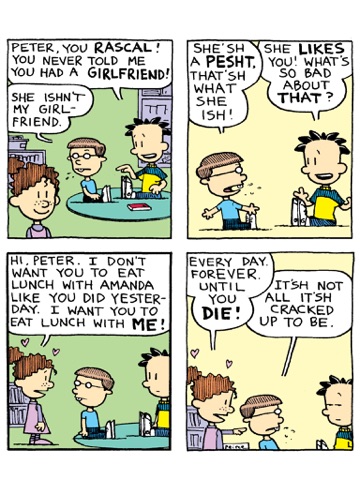Before the animation started, we had to choose which discipline we wanted to use for it; CGI or Stop Motion. I chose CGI, mostly because it was the only one of the main 3 disciplines where I didn't know how to animate characters, and wanted to get as broad experience with character animation as possible.
Speaking of which, the character rig we're using is from the website 11 Second Club, a site where animators are challenged every month to create animations around a certain idea. Aside from that, they also provide character rigs, one of which being called Max. Max is a simple human rig, resembling the wooden figures used to work on posing.

(A screenshot from MAX-verse expedition, an animation created as a part of one of the 11 Second Club's monthly competitions - credit: Paul Jun-Ho Chang)
Max has lots of controls for every joint in his body, from big joints like the hips and shoulders all the way down to individual finger controls. These can all be edited using Maya's rotate tool (or in some cases, like the shoulders, can also use the normal directional controls). Modification of one part can also influence other body parts to move too; for example, rotating the hips also rotates everything above the hips, instead of just the one joint.
Using Max, we used this session to mostly play around with the rig and get to grips with it. We had a light brief of making Max perform poses. Our first prompt was "waiting for the bus", followed by the emotions happy and sad, and we also got the chance to put our own pose in as well.
I found this pretty easy, and actually fun to do! It was a lot easier to make the character pull poses than I thought it'd be, and having accessible ways to make the character move around with the different handles was definitely a factor into making it a much more pleasant experience than it could've been.

(Waiting for the Bus)

(Happy)

(Sad)

("You Know I Had To Do It To 'Em" with reference)
To finish off the session, we very briefly started looking into how to make a walk cycle. We were recommended to use a different camera angle for it, specifically one that's fixed. Maya has two preset angles perfect for this; left and right cameras. They let you see from the chosen angles, without the ability to scrub across the Z axis, leaving you with essentially a 2D plain.
<video>
Overall, I enjoyed this first session of Mystery Box animation! It was a lot easier and much more interesting to figure out how character rigs work than I initially thought! I don't know exactly what I was expecting, since the only time I've seen CG character animation behind the scenes was from old Toy Story featurettes, but given they're from 1995 and it's been nearly 25 years since then, the techniques are probably easier than back then. Looking forward to more!












































